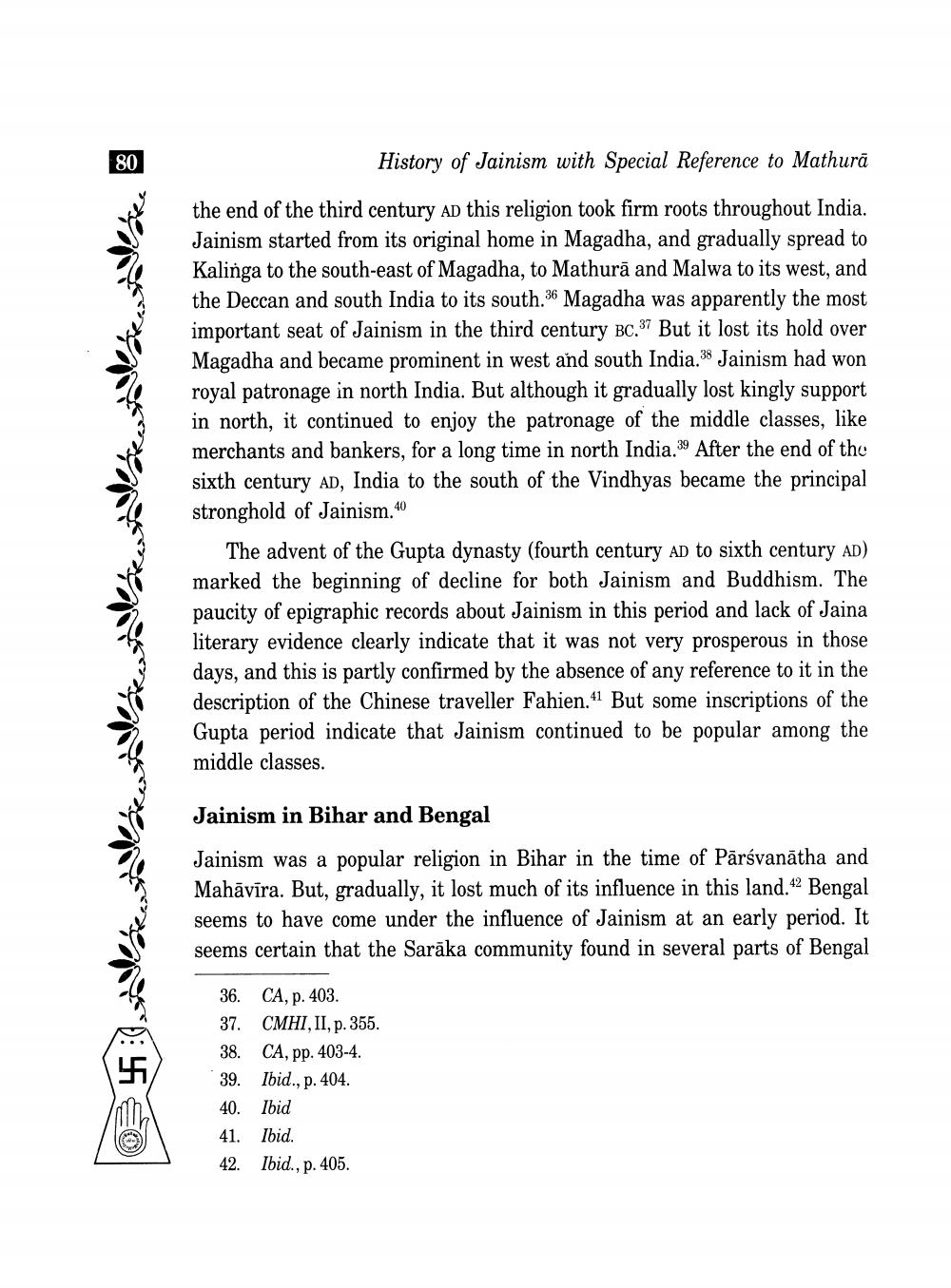________________
80
History of Jainism with Special Reference to Mathura
the end of the third century AD this religion took firm roots throughout India. Jainism started from its original home in Magadha, and gradually spread to Kalinga to the south-east of Magadha, to Mathurā and Malwa to its west, and the Deccan and south India to its south.36 Magadha was apparently the most important seat of Jainism in the third century BC.37 But it lost its hold over Magadha and became prominent in west and south India.38 Jainism had won royal patronage in north India. But although it gradually lost kingly support in north, it continued to enjoy the patronage of the middle classes, like merchants and bankers, for a long time in north India.39 After the end of the sixth century AD, India to the south of the Vindhyas became the principal stronghold of Jainism.40
The advent of the Gupta dynasty (fourth century AD to sixth century AD) marked the beginning of decline for both Jainism and Buddhism. The paucity of epigraphic records about Jainism in this period and lack of Jaina literary evidence clearly indicate that it was not very prosperous in those days, and this is partly confirmed by the absence of any reference to it in the description of the Chinese traveller Fahien.41 But some inscriptions of the Gupta period indicate that Jainism continued to be popular among the middle classes.
Jainism in Bihar and Bengal
Jainism was a popular religion in Bihar in the time of Pārsvanātha and Mahāvīra. But, gradually, it lost much of its influence in this land. 42 Bengal seems to have come under the influence of Jainism at an early period. It seems certain that the Sarāka community found in several parts of Bengal
36. CA, p. 403. 37. CMHI, II, p. 355. 38. CA, pp. 403-4. 39. Ibid., p. 404 40. Ibid 41. Ibid. 42. Ibid., p. 405.




